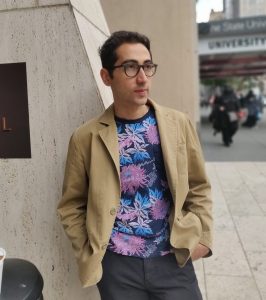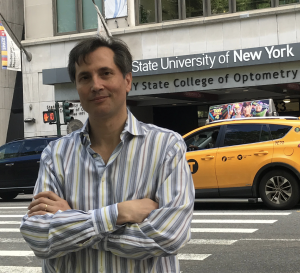
New York, NY —Recent research over the past year has illuminated the benefits of natural light to eye health and development, particularly for curbing myopia or nearsightedness in children and young adults. Now a new study from the State University of New York (SUNY) College of Optometry reveals how natural bright light can stimulate the visual brain more effectively and help people of all walks of life see objects and letters better. Published in the latest issue of Cell Reports (Feb. 2, 2021), the study focuses on the role of contrast sensitivity.

Contrast sensitivity is defined as the luminance or color difference between the foreground and background of an object that allows you to decipher exactly what you’re viewing. It plays a part in many everyday situations, such as determining if a shadow is an animal, person, or object and being able to ascertain words, music notes, and numbers on a piece of paper or in a book. Unlike visual acuity, which is the ability to discern letters or numbers at a distance, contrast sensitivity is an essential measure of visual function in low light situations, fog, or glare when the contrast between objects and their background is often reduced. Driving at night is an example that requires good contrast sensitivity to navigate the road safely.

“Until now, vision research has operated under the assumption that luminance contrast does not change with light intensity. That is, a dark letter on a white page has the same contrast outdoors (under the brightest light) than indoors (under the dimmest light),” said Hamed Rahimi-Nasrabadi, PhD, lead investigator and graduate student working in the laboratory of Jose-Manuel Alonso, MD, PhD, professor at SUNY Optometry. “Our study shows that this decades-old assumption is incorrect. We demonstrate that contrast sensitivity is strongly dependent on the amount of light and that natural, bright light stimulates the visual brain more effectively and improves eyesight.”
In the study, investigators measured the responses from neurons in primary visual cortex to stimuli with different contrasts and light intensities. According to Dr. Rahimi-Nasrabadi and colleagues, following the prevailing belief that visual contrast remains constant no matter the luminance setting may cause critical measurement errors that have general implications in basic research and clinical care.
“You can now feel good when you decide to read your favorite book outdoors and say that it is scientifically proven that visual contrast increases outdoors. We have shown that reading under bright light stimulates your visual brain more effectively, allows you to see the letters better, and may also help your eyesight,” said Dr. Rahimi-Nasrabadi. “The hope is that our study will serve as a catalyst for further investigation of contrast sensitivity and its role in current measures for the evaluation, diagnosis, and treatment of eye disease.”
For more information about the Graduate Center for Vision Research at SUNY College of Optometry and areas of investigation to advance vision care, visit sunyopt.edu/research.
For immediate release: February 2, 2021
Organization contact: Adrienne Stoller, communications@sunyopt.edu, 212-938-5600
###
About SUNY Optometry
Founded in 1971 and located in New York City, the State University of New York College of Optometry is a leader in education, research, and patient care, offering the Doctor of Optometry degree as well as MS and PhD degrees in vision science. The College conducts a robust program of basic, translational and clinical research and has 65 affiliated clinical training sites as well as an on-site clinic, the University Eye Center. SUNY Optometry is regionally accredited by the Commission on Higher Education of the Middle States Association of Colleges and Secondary Schools; its four-year professional degree program and residency programs are accredited by the Accreditation Council on Optometric Education of the American Optometric Association. All classrooms, research facilities and the University Eye Center, which is one of the largest optometric outpatient facilities in the nation, are located on 42nd Street in midtown Manhattan. To learn more about SUNY Optometry, visit www.sunyopt.edu.